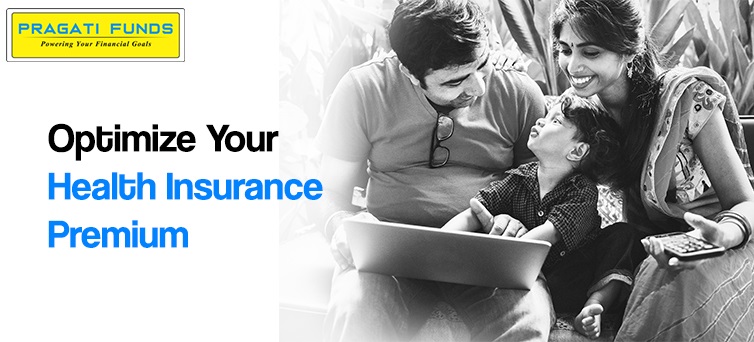- +91 9725410042
-



The COVID 19 pandemic has brought in focus the need for significant health insurance covers. The burgeoning health care costs inflating at a rate of more than 12 % annually has resulted in recategorizing health insurance premium from a “surplus expense” to a “necessity expense” in household budgets. New treatments and therapies are costly and the ability to fund these expenses can mean the difference between life and death. This has brought in the need to rationalize and optimize insurance premium costs. This raises various questions
There is no clearly defined answer to this question. It depends on a person’s age, the city of residence, number of family members, medical history, one’s income, and affordability and lifestyle. For example, exclusive room charges in a city like Vadodara can range from 3000 to 12000 depending upon the facilities, quality, and size of a hospital and the kind of care. The corresponding charges for nursing, injections, doctors visit also vary with the room tariff. In metros, they can be up to 25% higher. An imported knee replacement implant can cost twice as much a locally manufactured one.
There is however a broad consensus that an ideal health insurance cover must be at least 50% of your annual income.
Health insurance can broadly be divided into two types of cover
Compensatory and beneficiary. The actual costs of treatment subject to policy conditions are reimbursed under the first type of cover. The beneficiary type pays the insured the sum assured and is not linked to the actual treatment costs. It is payable over an above the compensation received towards actual costs. Generally, the beneficiary types cover a select list of illness/ diseases/ medical conditions which are severe in nature and require long term and or repetitive medical care.
Within the compensatory category are basic and top-up plans. A top-up insurance plan is one that triggers when a specified cost limit is crossed.
While the premium rates will keep increasing as one grows older and because of inflation in medical care costs, increasing the base cover can be very costly. It is a better proposition to take a combination of say Rs 3lac to 5 lacs of basic cover for a family of 3 to 4 persons and a top-up cover of 25 lacs. This will help optimizing the premium cost and also offer the security of a larger insurance cover.
With increasing, medical facilities life spans are increasing. But so is the incidence of illnesses and disorders and the resultant cost of health care.
For a fair amount of financial security, a judicious combination of basic cover plus top-up cover plus a critical illness cover is ideal.
This depends on the age of the family members, the income levels, and health conditions.
Ideally, a floater cover( both basic and top up) among 3 to 4 family members plus a critical illness cover will offer a fair amount of financial security. Critical illness covers are normally individual covers.
Check out with your existing insurer whether they can offer an upgrade to a product with better features and or higher sum assured. Compare the cost of similar competing products from other brands. Finalize the upgrade with the current insurer or switch to another brand after ensuring that the portability conditions are not too disadvantageous. Portability conditions require application 45 days prior to the expiry of the current policy. This is required to enable the proposed new insurer to underwrite the proposal and conduct diagnostic tests if necessary before accepting the proposal.
The new product must have one or more of
1. Better features – Eg. World wide Emergency assistance, Coverage for Ayush expenses, Organ transplant expenses for both the donor and recipient,
2. More treatments covered – Eg a bigger list of daycare procedures
3. Wider coverage – cover for more family members, more illnesses, more age groups, more free health check-ups, OPD coverage, etc.
4. Lesser premiums, more bonuses, more scope for discounts, No or lesser sublimits, restore benefit.
5. Life long renewal
6. Customer-friendly claims process
1. Sub-limits on room rents
2. Co-payments
3. Restrictive definitions of illnesses covered
4. Do not have a good track record of a smooth claims settlement
5. Fewer network hospitals
6. No domiciliary hospitalization limits
7. No incentive for claim-free years
8. No rewards for wellness
Tags : ,
Sign up to receive the latest news and promotions.
We are Distributors of Financial Products in India & NOT the Investment Advisors as per SEBI guidelines.
Mutual Fund Investments are subject to market risks. Please read all offer documents carefully before investing. There is NO Guarantee of any Returns in the Mutual Fund products.
"AMFI-registered Mutual Fund Distributor"
"ARN - 284652"
Date of initial registration 24th May 2004 valid till 26th Dec 2025
315, Pancham Icon,
Beside vasna DMart,
Vadodara - 390007
02652255191, +917622022853, +919725410042
Copyright © Pragati Funds 2021. All rights reserved.
Risk Factors – Investments in Mutual Funds are subject to Market Risks. Read all scheme related documents carefully before investing. Mutual Fund Schemes do not assure or guarantee any returns. Past performances of any Mutual Fund Scheme may or may not be sustained in future. There is no guarantee that the investment objective of any suggested scheme shall be achieved. All existing and prospective investors are advised to check and evaluate the Exit loads and other cost structure (TER) applicable at the time of making the investment before finalizing on any investment decision for Mutual Funds schemes. We deal in Regular Plans only for Mutual Fund Schemes and earn a Trailing Commission on client investments. Disclosure For Commission earnings is made to clients at the time of investments.
Important Links | Disclaimer | Disclosure | Privacy Policy | SID/SAI/KIM | Code of Conduct | SEBI Circulars | AMFI Risk Factors